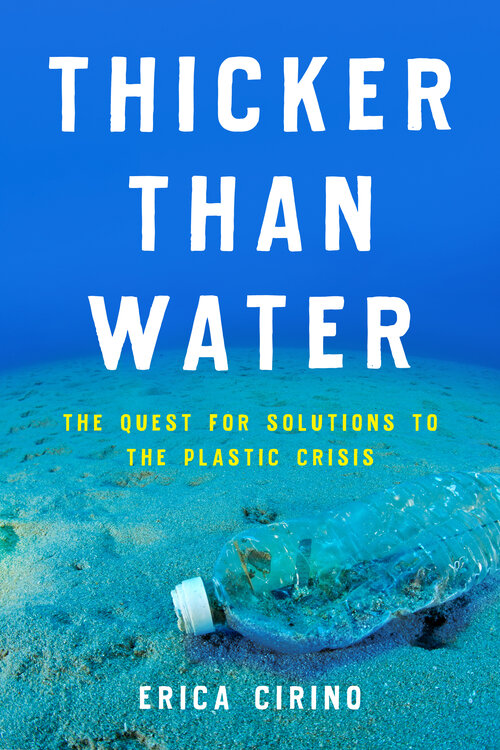
The Quest for Solutions to the Plastic Crisis”
By Erica Cirino
Island Press, 2021
272 pages, hardcover, $28
Solid municipal waste, much of which is composed of plastic, is on the rise across the globe. Estimates indicate that since the mid-1900s, humans have produced over 8.3 billion metric tons of non-recycled petrochemical-based plastic. Worse still, 76% of that plastic is believed to have been used only once or twice before being discarded. In her exhaustively researched “Thicker Than Water: The Quest for Solutions to the Plastic Crisis,” journalist Erica Cirino explores both what is contributing to the surge in use of plastics and what is at stake — for the environment and humanity.
Since its invention in 1862, plastic has supplanted natural materials including ivory, wood, clay, rock, metal, ore and banana leaves (used as to-go food wrappers) the world over due to its durability. Plastic’s permanence, as it turns out, is also its greatest flaw.
Cirino crews on a sailing vessel studying plastic pollution in the Great Pacific Garbage Patch, observes plastic particles found in the environment being inventoried by scientists in Denmark and upstate New York, and visits communities in so-called “Cancer Alley,” where predominantly Black citizens are across the “fence lines” from the United States’ major sites of environmental pollution. Along the way the author forces readers to bear witness to the global crisis that our addiction to plastic is fueling.
On her 2016 voyage to the notorious garbage patch Cirino watched degraded bits of plastic, called microplastic or nanoplastic depending on size, that are “constantly and unpredictably stirred by the roiling sea.” The United Nations estimates that there are at least 51 trillion of these particles in the world’s oceans — a count 500 times greater than all the stars in the Milky Way, says Cirino.
Microplastics pose a threat to marine and freshwater ecosystems, and to human health. The pitted surfaces of plastic particulate act as potential reservoirs for pathogens, such as E. coli, and chemicals, including DDT and PFAS. A chemistry expert at the University of Buffalo warns that the total PFAS contamination of drinking water containing microplastic might be underestimated — as microplastics can be impregnated with chemicals that go undetected in testing. Scientists also believe that the plasticizers used in manufacturing, including bisphenols and phthalates, can leach into bodily systems. Due to the pervasive nature of microplastics in the environment, these “little poison pills,” as Cirino calls them, are a hazard to both individual species — from zooplankton up the food chain to humans — and entire food webs.
While Cirino does not dwell on agricultural plastic as a significant source of pollution, she notes that plastics used in farming can and do lead to micro- and nanoplastics in the environment, which can interfere with plants’ uptake of water and may also contribute to the 39 to 52 thousand bits of microplastic consumed per person per year. (Also worth considering is the sheer amount of plastic used in the average household.)
Cirino’s holistic reporting shows that exposure to plastic can come from more insidious sources further up the pipeline and documents the disproportionate placement of industrial zones in Black communities. Such environmental racism is prone to worsen in the face of climate change which, as the author points out, plastics contribute to.
So how do we, as members of the “Plasticene” period, effect change in a world so contaminated by plastic that it can be found both in the deepest ocean trench and orbiting the planet? Readers can tag along with Cirino as she shadows work crews collecting discarded plastic on a remote shoreline in Hawai’i, and another in Thailand, interviews inventors focused on removing plastic from our waterways, and hones in on when and where recycling works — and falls disastrously short — in an attempt to find solutions to one of the most pressing problems the Earth has ever faced.
Holli Cederholm
